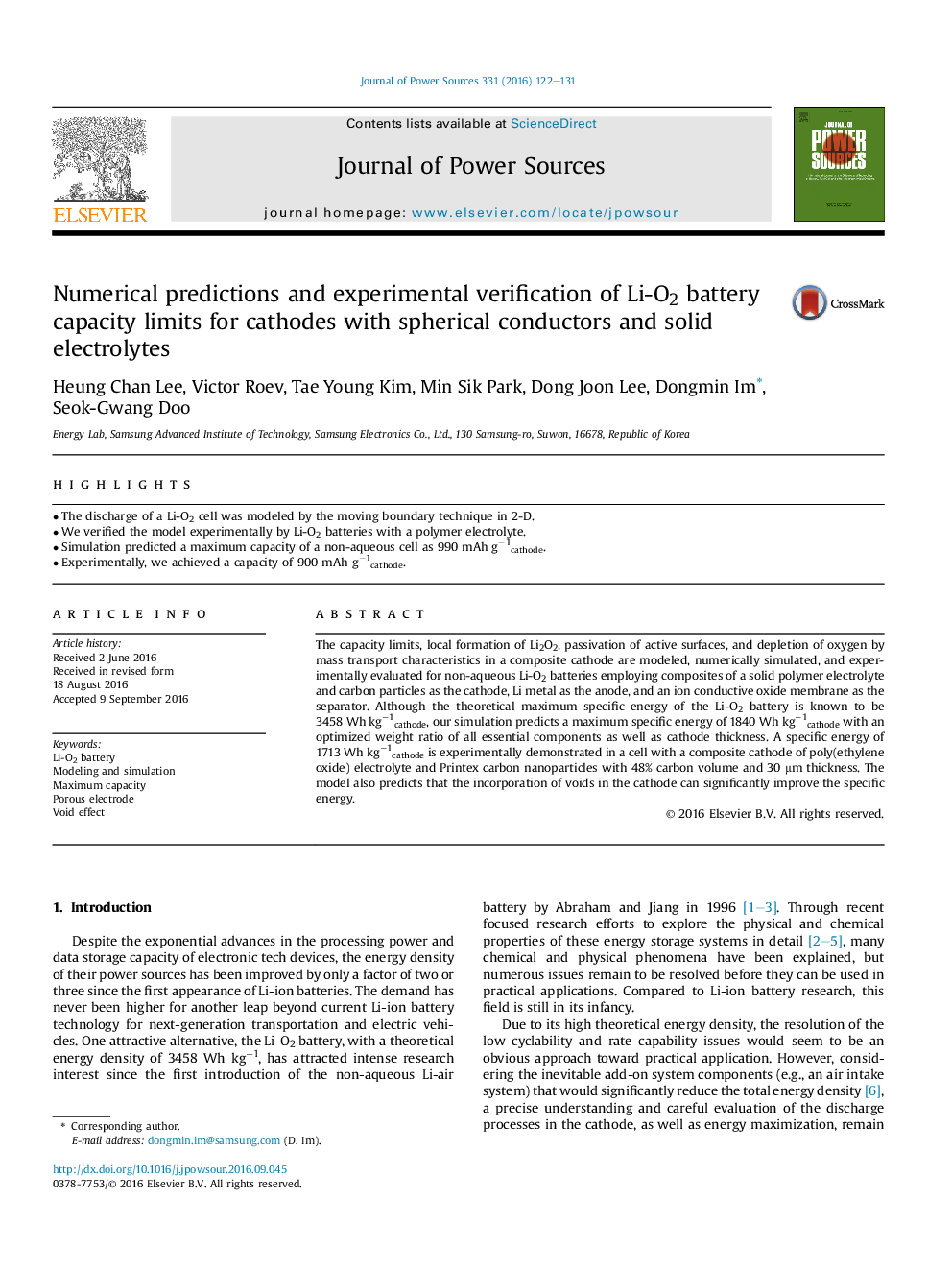| Article ID | Journal | Published Year | Pages | File Type |
|---|---|---|---|---|
| 5150167 | Journal of Power Sources | 2016 | 10 Pages |
Abstract
The capacity limits, local formation of Li2O2, passivation of active surfaces, and depletion of oxygen by mass transport characteristics in a composite cathode are modeled, numerically simulated, and experimentally evaluated for non-aqueous Li-O2 batteries employing composites of a solid polymer electrolyte and carbon particles as the cathode, Li metal as the anode, and an ion conductive oxide membrane as the separator. Although the theoretical maximum specific energy of the Li-O2 battery is known to be 3458 Wh kgâ1cathode, our simulation predicts a maximum specific energy of 1840 Wh kgâ1cathode with an optimized weight ratio of all essential components as well as cathode thickness. A specific energy of 1713 Wh kgâ1cathode is experimentally demonstrated in a cell with a composite cathode of poly(ethylene oxide) electrolyte and Printex carbon nanoparticles with 48% carbon volume and 30 μm thickness. The model also predicts that the incorporation of voids in the cathode can significantly improve the specific energy.
Related Topics
Physical Sciences and Engineering
Chemistry
Electrochemistry
Authors
Heung Chan Lee, Victor Roev, Tae Young Kim, Min Sik Park, Dong Joon Lee, Dongmin Im, Seok-Gwang Doo,
